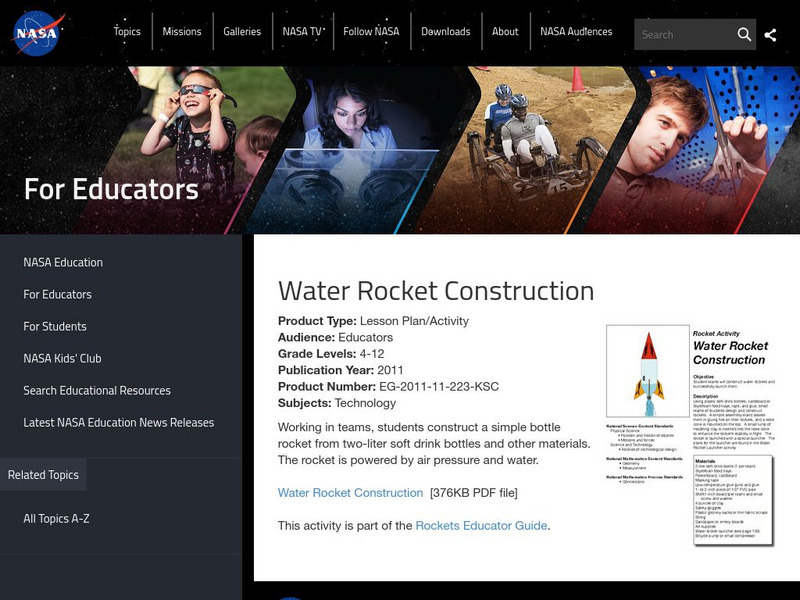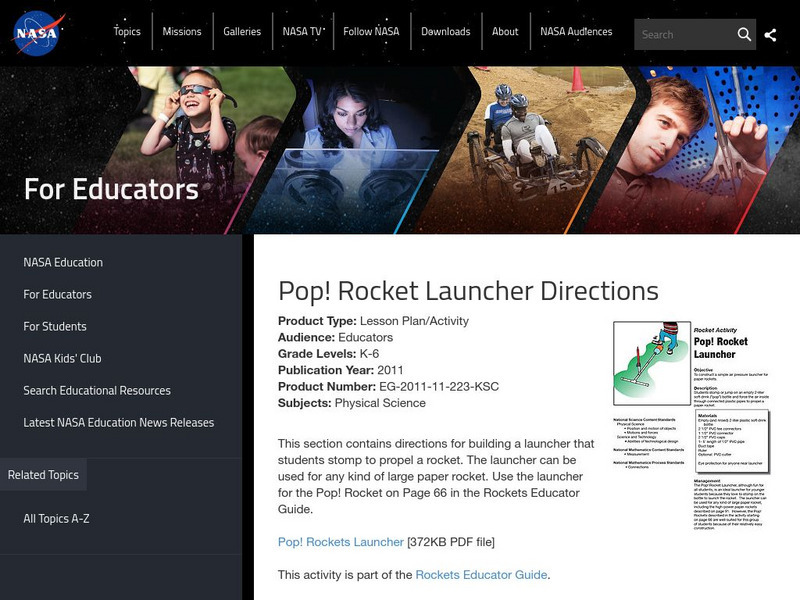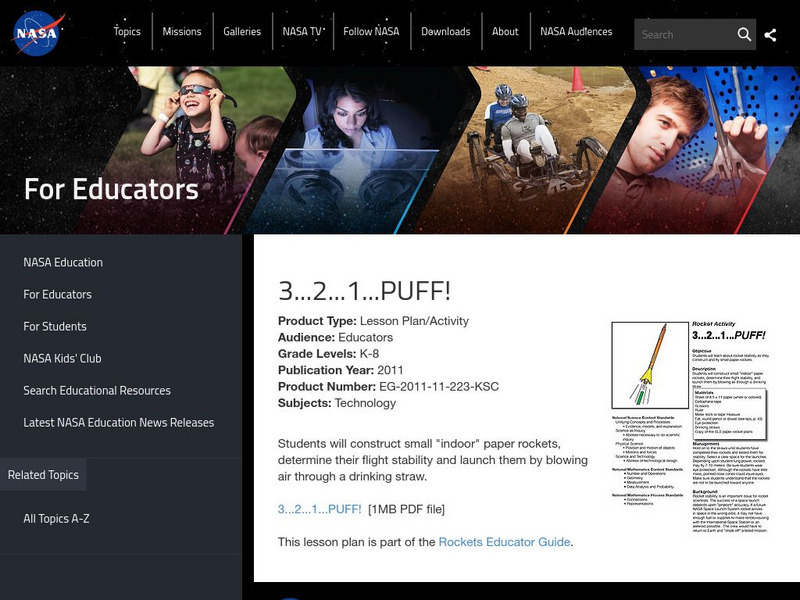Hi, what do you want to do?
Curated OER
Using Infinitives In Context
In this using infinitives in context worksheet, students read an article containing infinitives, then interactively complete 8 sentences with immediate online feedback.
Curated OER
Balloon Jets
Learners investigate how fuel amount affects the distance traveled by balloons. In this physics lesson, students collect data and create a pictograph. They interpret data and formulate a conclusion.
Curated OER
Toying Around with Newton's Laws
Eighth graders identify balanced and unbalanced forces that affect the movement of objects and Newton's three Laws of Motion. Students also design a contraption utilizing Newton's Laws of Motion that will launch a marshmallow five meters.
Curated OER
Electricity and Magnets
In this physics review worksheet, students compare average and instantaneous speed, review Newton's laws, electricity, and magnets. This worksheet has 12 fill in the blank, 8 short answer questions, and 6 problems to solve.
Curated OER
Blast Off to Learning
Middle schoolers explain the laws of volume and pressure, identify what a limiting reagent is and why it is important in a chemical reaction, and distinguish between fossil fuels and renewable energy sources.
Curated OER
Invent a Holiday
Students compare their own special holidays and traditions and then use their imaginations to create their own holiday.
Curated OER
EGG-STRA, EGG-STRA LEARN ALL ABOUT IT
Students explore how animals produce young by watching age-appropriate videos on the subject. They watch as chicken eggs either hatch or not in an incubator.
Curated OER
Out and About: Railways
Students explore British Railway history. In this railway instructional activity, students may visit the Natural Railway Museum, the Darlington Railway Centre and Museum, or Steam - Museum of the Great Western Railway online or in-person...
Curated OER
Newton's Third Law of Motion
Seventh graders are introduced to Newton's Third Law of Motion. In this physics lesson students examine the concept of thrust as one of the forces acting on aircraft.
Curated OER
Water and Ice
Pupils will work in small groups, observing an ice cube and recording a description, the feel of the ice, and how it looks when put in another container. Students observe changes in the ice over 15 minute intervals, then freeze the water...
Curated OER
Everyday Heroes
Students research heroes and create their own criteria of what constitutes a hero. They choose a personal hero and create a web page that portrays the individual and their accomplishments. Students create a presentation for the class.
Curated OER
Fuel Saving
Students explore the problem of percentages. Students find a given fraction or percentage of a quantity. Students devise and use problem solving strategies on problems explored.
Curated OER
Satellites
Eighth graders explore the history of space travel and satellites. Through a teacher demonstration, 8th graders observe how a satellite revolves another object. They identify natural and artificial satellites, explore how satellites...
Curated OER
A New Century Of Flight
Students study an article on high speed travel. In this investigative lesson students students read an article, answer questions then work in groups to calculate problems.
Curated OER
Colonial Geography: To and From Canada
Young scholars identify the major geographic features of colonial New England. They explain the essential parts to a map and interpret journals to plot a journey. They discover the connection between geography and life.
Curated OER
Cold War - The Space Race
In these Cold War worksheets, students read about the space race between the United States and Russia. Students also read about the first man on the moon and answer 8 questions about the texts.
NASA
Nasa: Rockets Educator Guide: Newton Car
This lesson gives students direction on how to experiment using gravity and force. Students will make a wooden car and use different forces to make the car propel.
NASA
Nasa: Rockets Educator Guide: Water Rocket Construction
Students will follow steps to construct a rocket from a two-liter soft drink bottle and other materials. Students will use the water rocket launcher to launch this rocket.
NASA
Nasa: Rockets Educator Guide: Rocket Races
This lesson allows students to create their own rockets using foam trays and drinking straws that are powered by a balloon. Students will race their rockets on a track and determine why some rockets moved faster than others.
NASA
Nasa: Rockets Educator Guide: Pop! Rocket Launcher
This lesson allows students to construct a rocket launcher that can be used for several different types of rockets. This rocket launcher is propelled by students stomping on a two liter bottle to provide force.
NASA
Nasa: Rockets Educator Guide: Foam Rocket
This lesson plan shows students how to construct a rocket using pipe insulating foam. Students will investigate the relationship between launch angle and range when launching their rockets powered by rubber bands.
NASA
Nasa: Rockets Educator Guide: Pop! Rockets
This lesson plan allows students to make a rocket with card stock paper. Students will be able to launch the rocket and then discuss the variables affecting the height of each launch.
NASA
Nasa: Rockets Educator Guide: Water Rocket Launcher
Follow the directions in the lesson plan to construct a water rocket launcher made from off the shelf hardware and wood.
NASA
Nasa: Rockets Educator Guide: 3, 2, 1, Puff!
This instructional activity gives directions for students to construct small, paper rockets that can be launched inside. The students will determine how stable the rocket is and launch them by blowing air through a straw.




























